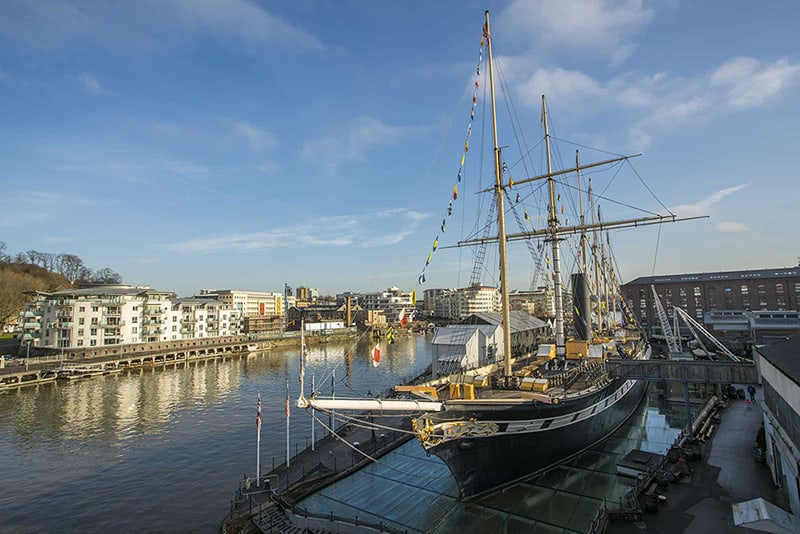- This is the biggest and most important object in our collection the SS Great Britain.
- The ship was designed by the engineer Isambard Kingdom Brunel and built by ship builder William Patterson. The work took 4 years and was carried out in a specially constructed dry dock at the Great Western Dockyard in Bristol harbour.
- When it was launched on 19 July 1843, it was the largest ship in the world and the first ocean going iron-hulled, propeller driven steamship.
- After sailing more than 1,000,000 nautical miles, it spent over 80 years in the Falkland Islands. In 1970 the SS Great Britain was returned to Bristol and the same dry dock where it was built. The ship has since been carefully cared for and you can now see it looking like it did at its launch.
The Story
Wood to Iron
Following the success of his first ship, the SS Great Western, Brunel set about designing a second ship. The SS Great Britain was originally designed to be a wooden paddle steamer, like the Great Western but larger in size.
However, in 1838 the iron hulled ship Rainbow visited Bristol harbour. Interested in finding out more about the ship’s design, Brunel sent his colleagues, Captain Christopher Claxton and William Patterson, on board for a voyage. He was then able to use their findings from the trip to support his idea to use iron rather than wood.
Using iron to make a ship’s hull allows it to be stronger, bigger and longer lasting than a wooden hull ship; the pieces of iron needed to make the hull are thinner than the pieces of wood that would be needed to give the same strength. This means that the ship ends up not just lighter than a wooden one, but there is also more space inside the ship for cargo, passengers, and importantly coal for the steam engine.
By showing that iron offered greater strength and more capacity, Brunel was able to persuade the company’s board (the people who were paying for the ship) to change the Great Britain from a wooden to an iron hulled ship, despite the fact they’d already purchased a large amount of oak for the job!




